Narrative Changing: What It Takes and Tools to Win
juillet 25, 2022
The stories we tell shape our culture – what we like and dislike, who we listen to, how we take action, and what we believe. They do so because those stories contain patterns, or narratives, that affect how we see ourselves, others, and the issues affecting us all. But what happens when false or misleading narratives confuse or misrepresent the issues? How do we get back on track? We have to change the narrative.
Narrative change is a process of evolving the stories told in and about our culture by centering and distributing accurate, empowering stories. It’s a powerful tool for raising awareness and gaining support, and it often opens the door to other types of change or audience engagement. However, it’s important to understand that narrative change can sometimes be a long and nuanced process. It’s no small task to change hearts and minds, so we must understand what it takes to win. Thanks to our recent work in the narrative change space, we do. It takes a strategic approach and tools, it takes learning from the successes and failures of others, and it takes an ecosystem of practitioners, supporters, and funders working together toward a shared goal.
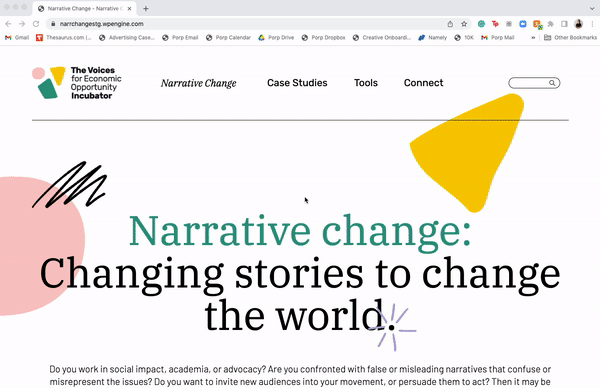
That’s why we built narrativechanging.com – a resource that shares insights, case studies, and resources from the Voices for Economic Opportunity Incubator with those who are interested in narrative change work.
The website serves as an accessible narrative change toolkit that takes practitioners on a guided journey from audience research and strategy to content production and distribution. Through the work conducted during the Incubator – a program that supported 28 organizations across a variety of sectors in producing narrative change projects addressing poverty and economic mobility – we’ve gathered learnings on what it takes to do narrative change well. In the spirit of movement generosity, our hope is that by sharing our findings, more people can expand their skills as storytellers and changemakers and that the knowledge base for narrative change might grow.
It takes a strong narrative change strategy:
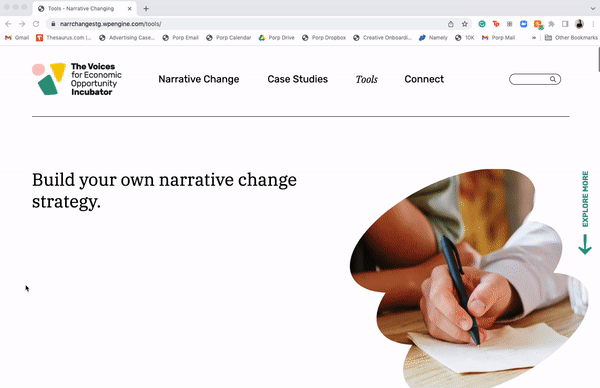
Effective narrative change work starts with a solid strategy, and that strategy should be grounded in five important strategic elements – goal, audience, tactics, distribution, and measurement & evaluation. While many robust strategic frameworks exist, we’ve found that these five elements are key to developing a plan that can achieve one or more narrative change goals. On the website, you’ll find a theory of change template that leverages the five key elements and serves as a roadmap for you to create an effective narrative change strategy.
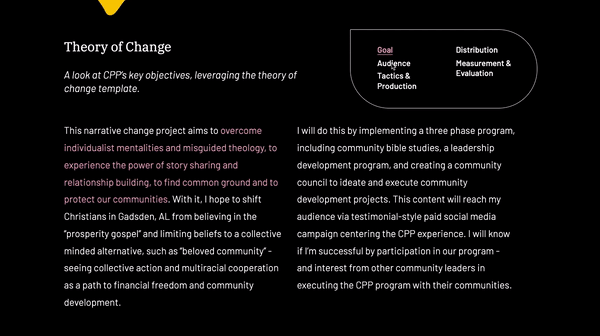
It takes hands-on tools and templates:
You may be starting out with an interest in what it means to do narrative change work, or maybe you’re already changing narratives and you want to strengthen your ideas. You may work in a nonprofit, academia, or advocacy. Regardless of your experience or organizational background, the tools featured on the website should help your team align on your goals, create a shared understanding of your plan for how you’ll execute and distribute the work, and help you pressure test your ideas.
 Goal – The creative brief will help you think through your vision, objectives, and overall approach.
Goal – The creative brief will help you think through your vision, objectives, and overall approach.
 Audience – The Audience Persona and Insights worksheet will help you define and understand the key audience(s) that you want to engage and what action you want them to take.
Audience – The Audience Persona and Insights worksheet will help you define and understand the key audience(s) that you want to engage and what action you want them to take.
 Tactics – Your messaging will be shared widely through your tactics, which may involve creating new content, programming, events, and/or campaigns. The Tailored Messaging Checklist will help you think it through.
Tactics – Your messaging will be shared widely through your tactics, which may involve creating new content, programming, events, and/or campaigns. The Tailored Messaging Checklist will help you think it through.
 Distribution – The POSE framework – short for “paid, owned, shared, and earned” media – will help you develop your methods for getting your content in front of your audience.
Distribution – The POSE framework – short for “paid, owned, shared, and earned” media – will help you develop your methods for getting your content in front of your audience.
 Measurement & Evaluation – Measurement and evaluation should be built into your strategic planning from the start. The Engagement Testing Checklist will help you explore ways of measuring success throughout your project journey.
Measurement & Evaluation – Measurement and evaluation should be built into your strategic planning from the start. The Engagement Testing Checklist will help you explore ways of measuring success throughout your project journey.
It takes studying existing narrative change work.
A great way to strengthen your own narrative change work is to better understand the work of others. While there is much to learn from their successes, the challenges and obstacles of a project provide just as much rich insight. By seeing narrative change in action, you’ll gain a better understanding of what worked, what didn’t, and why.
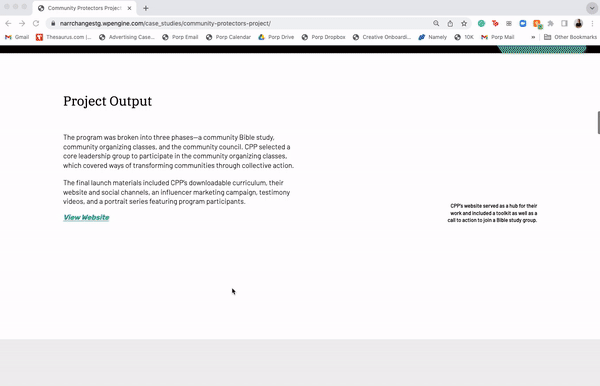
Explore the Community Protectors Project case study on the website to learn how they challenged individualistic faith narratives about wealth inequality in the rural South. In their hometown of Gadsden, Alabama where many believe that financial success is the result of a strong Christian faith, CPP founder Sav Miles wanted to create space for a more communal narrative, one that views poverty as a problem that touches all of us, and consequently calls for collective action and community solutions.
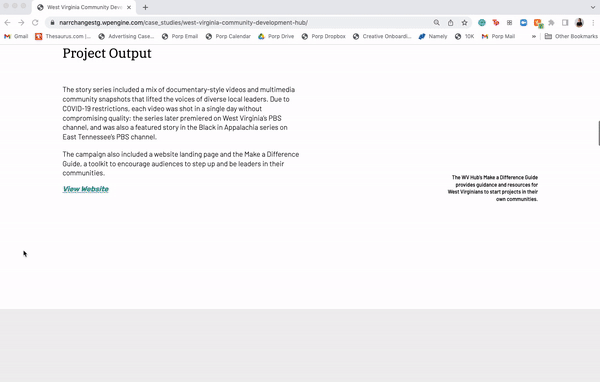
You can also explore West Virginia Community Development Hub’s case study to understand how they encouraged West Virginians to see themselves as community leaders. WVCDH sought to challenge the narrative that Rural Appalachia is a hopeless place that is frozen in time, replacing it with the accurate narrative that West Virginia is teeming with diverse, creative, hardworking leaders who are collaborating to chart a new course for their communities.
It takes a village.
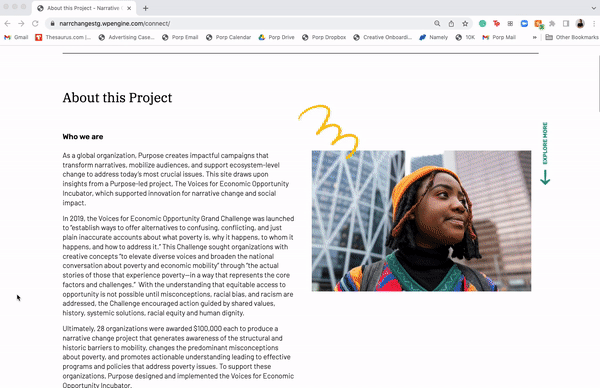
Narrative change doesn’t happen overnight. And it doesn’t happen in a vacuum. Changing the tides on harmful narratives requires strong infrastructure, a collaborative ecosystem of practitioners and supporters, and a sense of community.
Because narrative change means playing the long game, the strategies shared on the website can help you get started on a new project or help you reach your goals with existing ones. No matter which phase you’re in, our website should help you build a broad coalition to inspire and strengthen your work. By working alongside others to better understand what story you want to tell, who you’ll tell it to and how, where it will live, and if it works, you can change the narrative. And if you can change the narrative, you just might be able to change the world.
Learn more at: Narrativechanging.com
for Equity & Evidence